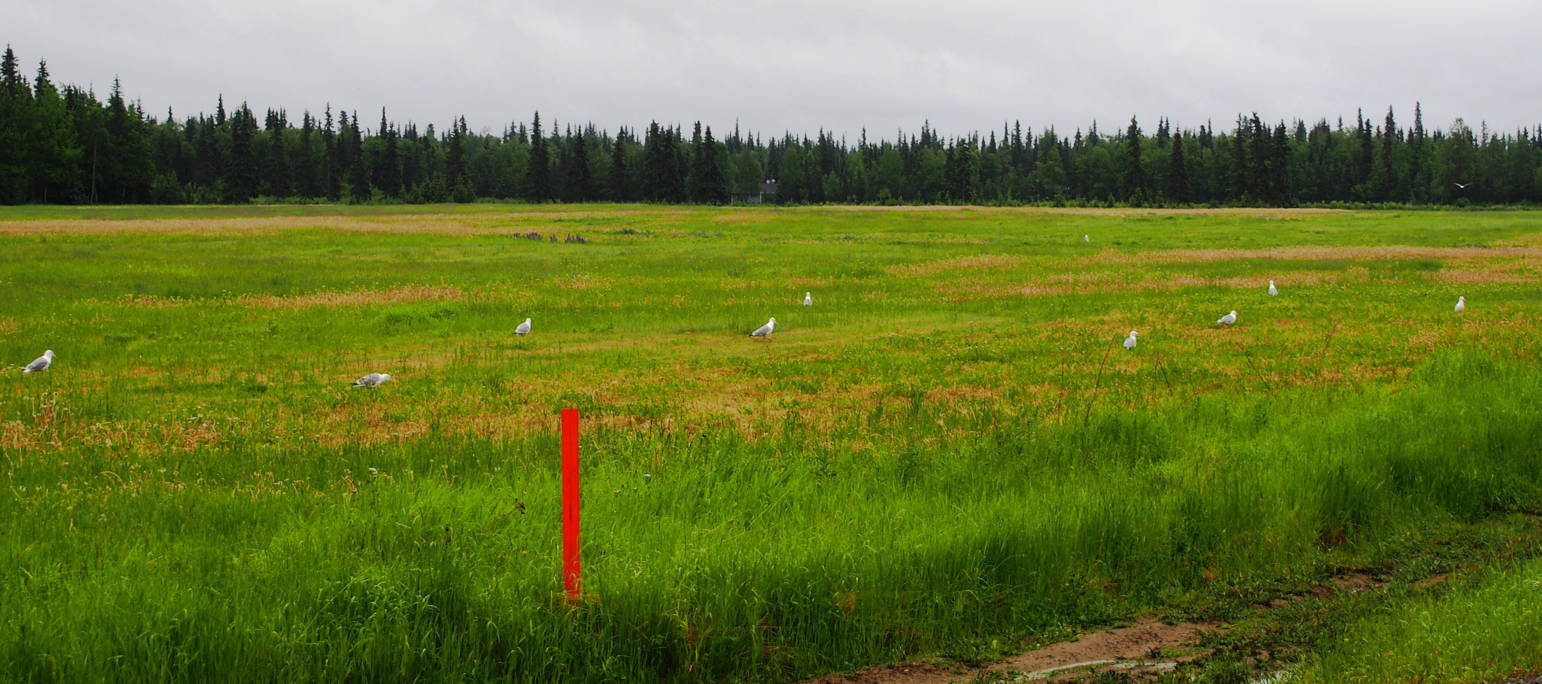Earlier this spring, while passing a recently fallowed hay field, I noticed some large white birds wandering through the grass. At first glance, I thought these were early Snow Geese migrating through on their way to Siberia. I pulled over to investigate only to find that they were mostly Larus gulls. There were 37 of our typical Glaucous-winged x Herring Gull hybrid and another 12 Mew Gulls. This was puzzling. Along the field’s edge were dozens of Robins as well.
The appearance of birds in the field is not unique, but these birds in these quantities had not been seen in the five years I had been driving by the field daily. What could possibly draw these larger gulls here to feed? My first thought was a new infestation of night crawlers or some large-bodied food source. These are big birds that usually don’t bother stopping unless there are substantial calories to be gained.
As this event continued for several weeks, I could not let the question go unanswered any longer. I brought my spotting scope out to see if I could identify what they were eating. They were wandering through the grass and picking at something in the grass, but I still could not see what it was, even at 60 power. It certainly was not earthworms as there was no digging — just pick, pick, pick, run to another spot and more picking.
I had to know! I jumped the fence and dropped to my hands and knees to try and spot a fat delectable bug that may be drawing the flocks of birds… nothing. I have seen this behavior with grasshopper irruptions, but there were no grasshoppers to be found. Next I broke out my sweep net and began scraping the 3-inch tall grass in areas where the gulls had been picking. I made about 10 swipes through the grass and found 35 tiny caterpillars in the bottom of my net. Could it be simply this tiny caterpillar about the size of long-grained rice that in mass quantities was the gold mine?
Caterpillars can be relatively hard to identify morphologically, so we employed a relatively new technique using LifeScanner kits to identify them genetically. Several online libraries of DNA barcodes have been compiled and expanded by many contributors worldwide that form the basis for comparison with unknown samples. We have found the technique very successful— even identifying an insect from a single leg recovered from the stomach contents of a dead shrew (http://www.akentsoc.org/doc/AKES_newsletter_2017_n1_a05.pdf).
We suspected that the little non-descript caterpillar was the small white moth seen in grassy areas of the Kenai Peninsula last summer in epic numbers. After a long three weeks, the results were in and it was indeed this small white moth (http://boldsystems.org/index.php/Public_RecordView?processid=MOBIL4811-17). Crambus perlella or the Immaculate Grass-veneer Moth is a skinny white moth with a wingspan less than 1 inch. The forewing is “completely white with a satin lustre.” The adults have one hatch and fly from late June to August, laying eggs at the base of various grass stems. The larvae overwinter in small silken galleries at the base of grass stems or even partially in the soil. In spring, they continue to eat grass stems and roots until they pupate and the next crop of adults emerges to start the cycle all over again.
This species has several defined subspecies and inhabit areas around the globe from northern Europe, Asia, Alaska, and Canada to as far south as British Columbia. While this innocuous little moth is easily overlooked by humans, it did not go unnoticed by the birds when conditions produced an immense proliferation of the species.
So, case closed for now. I am still fascinated by what may have triggered such a large irruption of this species the past two summers. Will this continue? How many years will we see these numbers of this species and will they persist at a level capable of drawing large birds to these fields? With the expansion of Calamagrostis on the Kenai Peninsula, will we continue to see more irruptions of Crambus perlella? They are always present, but at what point does their population become dense enough to make it energetically economical for large gulls to target them? Is there a density where even larger animals like black bears could target them like ant or wasp nests? Can their densities negatively affect certain grass species and, if so, does there preference for one species of grass give an advantage to other grass species?
As with most investigations, more questions often arise then answers. For now, I have been able to answer the most basic question of why these gulls were in the field. Only time will tell if this is a blip on our ecological radar or a sign of future changes to our landscape.
Todd Eskelin is a Wildlife Biologist at Kenai National Wildlife Refuge. He specializes in birds and has conducted research on songbirds in many areas of the state. Find more information at http://www.fws.gov/refuge/kenai/ or http://www.facebook.com/kenainationalwildliferefuge.

